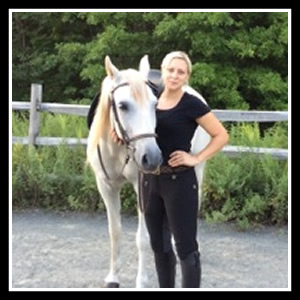Long Reining: Part 1

Hi this is Will Faerber from Art2Ride and today we are going to have a lesson on long reining. We have had quite a few comments on our website asking me to do some videos on long reining, so that’s what we are going to do today!
This horse that we are watching in the video is named Claire and she was a horse that had been in pasture for 5 years, basically a green horse that we started training about 3 weeks ago. We started with lunging her. As a prerequisite to long reining you certainly need to have the horse lunging correctly before you even think about starting to long rein. Another consideration here is notice we are in a pen that is completely surrounded. The thing I want to talk about with long reining is it is a very dangerous thing to do for riders and for horses. It is something that you want to have someone with you who knows what they are doing so they can watch you do this and make sure you’re not getting caught up. You should certainly be very fit yourself before you begin to do this because with long reining everything happens very quick, you have two reins to deal with as well as a green horse usually, so you have to be very agile on your feet. So don’t even begin to try this unless you are physically fit and don’t have any trouble staying on your feet so to speak. You want to keep your posture upright just like when we lunge as well. The most important thing is you take each step individually that I am going to take you through before you go on to the next one in order to be safe.
Now we are going to put this horse in long reins and you will see a horse going for the first time. This horse has never been long reined before so you will see me go through all of the steps that are necessary. The first step is having your horse lunging quietly (as shown in video) and stretching into the contact with the side reins. As you can see she has developed a nice rhythm to the point where we might want the long rein. Now some people ask me, is long reining useful? Long reining is useful! I do it only a few times with a horse: usually with young horses and with a horse that is a little inactive, because the line going behind the horse’s hind end will tend to speed it up a little bit. But those kind of things will only work once or twice because the horse will get used to it. I don’t know if you have seen that there are a lot of lunging devices out there that have attempted to create something like long reining, but these are all wrong thinking because if you knew how to lunge you wouldn’t need them because you would have the horse swinging through behind. If you don’t know how to lunge, in almost no time at all, the horse is going to get used to the rope behind it and it’s going to forget about it and slow down just as it would if you were on a lunge line. So once again, learning to lunge correctly is the first step to this, so once you can do that and can manipulate the whip then you can begin to think about this.
The biggest danger with the long reins is since your basically riding the horse in your hands it is very difficult to keep from over bending the horse, and it’s the biggest mistake that we see and can actually be the ruination of many horses. The other thing if your not very quick and careful, a couple of years ago there was an article in a magazine about how to teach your horse piaffe in long reins at home and this is something that no beginner should ever try, I saw a beginner try to do this and within two minutes the horse had spun around and twisted the lines around it’s legs and fell over and was hog tied and all caught up in the reins as well as the man! So these are very dangerous techniques that must be done one step at a time if you’re going to do them and you must always watch for the dangerous aspects of it, that is mostly if you’re overbending the horse you and your horse are more likely going to get tied up in the lines, which is very easy to do.
So once again, the first step is lunging and then we will go on to step two. Thank you so much, this is Will Faerber from Art2Ride.





Leave a Reply